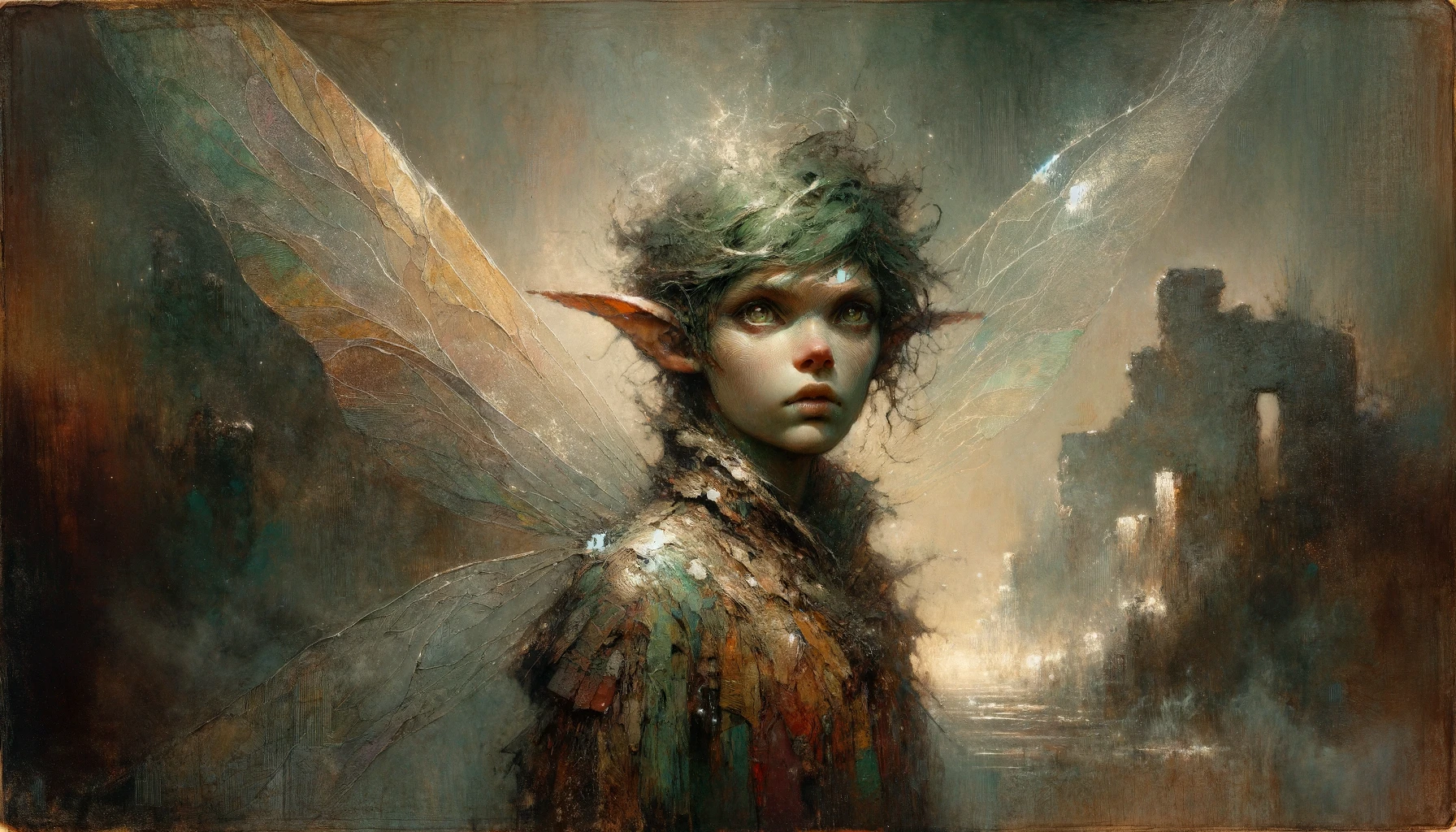The Fairy race, ethereal and whimsical beings, embody the magic and mystery of the natural world. With their diminutive stature and innate magical abilities, Fairies are a race of enchantment and trickery, often living hidden away in enchanted forests, meadows, and glens. Their close ties to nature and the elemental forces make them guardians of ancient secrets and natural wonders.
Society and Culture
Fairy societies are as diverse as the environments they inhabit, with each community reflecting the characteristics of its surroundings. They live in hidden enclaves, shrouded from the eyes of larger, more mundane creatures. Governed by ancient pacts and the laws of the fey, their societies are often matriarchal, led by wise and powerful figures revered for their age and magical abilities.
Fairies are deeply connected to the seasons and cycles of the natural world, celebrating with festivals that honor the moon, stars, and turning of the seasons. Their celebrations are legendary, involving intricate dances, music played on instruments made from natural materials, and feasts of nectar and ambrosia.
Relations with Other Races
Fairies are curious about the larger world but cautious of revealing themselves to others, often interacting with the world outside their enclaves through acts of secret kindness or playful trickery. They are most comfortable with races that have a strong affinity for nature, such as Elves and Druids, and can form strong, if unpredictable, alliances with them.
Fairy Adventurers
Fairy adventurers are rare but not unheard of, driven by curiosity, a desire for new experiences, or a mission to protect the natural world. Their small size and magical abilities allow them to move through the world in unique ways, often unseen and underestimated by their foes. As scouts, spies, or emissaries of the fey, Fairy adventurers bring a touch of magic and mystery to any party, along with the resourcefulness and courage that belies their diminutive form.
Age
Fairies reach maturity by the age of 10 and can live to be over 500 years old, with their appearance remaining youthful throughout their long lives.Alignment
Fairies are often neutral, embodying the capriciousness of the natural world. They may lean towards good, with a penchant for mischief rather than malice.
Size
Fairies are small and delicate beings, standing around one foot tall and weighing approximately 40 pounds.Your size is tiny.
Speed
Your base walking speed is 10 feet.
Your base swimming speed is 5 feet*.
Your base flying speed is 30 feet.
Your base climbing speed is 5 feet*.
* calculated speed.
Languages
You can speak, read, and write: Common, Sylvan.
Ability Score Increase
- Dexterity: +2
- Charisma: +1
Skill Proficiency
You have the following skills: Stealth.
Race Features
Fey Ancestry
You have advantage on saving throws against being charmed, and magic can’t put you to sleep.
Innate Magic
You know the Druidcraft cantrip. When you reach 3rd level, you can cast the Faerie Fire spell once with this trait and regain the ability to do so when you finish a long rest. When you reach 5th level, you can also cast the Enlarge/Reduce spell on yourself once with this trait, only to reduce size, and regain the ability to do so when you finish a long rest. Charisma is your spellcasting ability for these spells.
Trickster's Escape
You can use your action to magically escape from nonmagical restraints or grapples. After you use this feature, you can’t use it again until you finish a short or long rest.
Natural Stealth
You have proficiency in the Stealth skill.
Lore
The Stream
Credits: Game Squires

